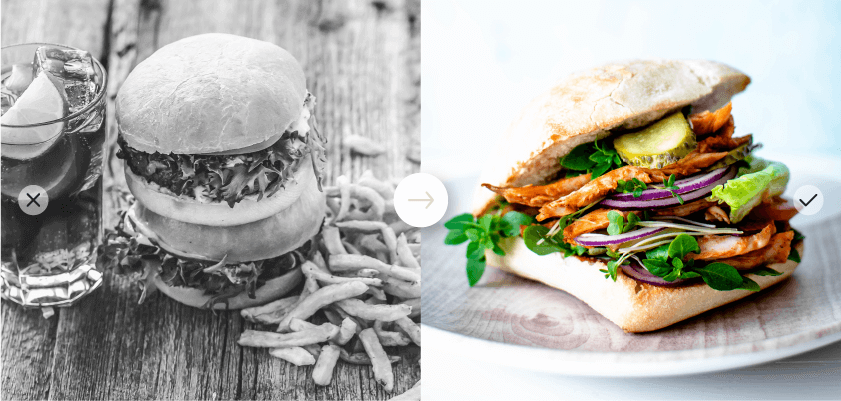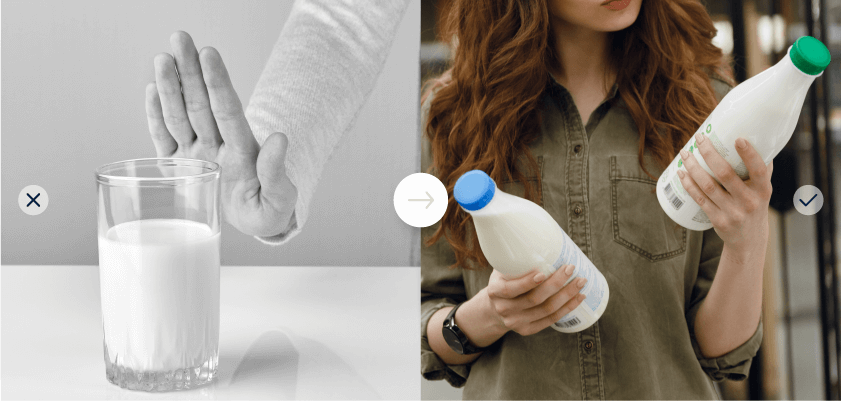There is an inherent human need to feel that we have control over our surroundings. You depend on them and the diversity of answers to the same question generates a feeling of lack of control that makes us feel very uncomfortable. We need to “know” things! This is good, this is bad. This yes, this no. This is true, this is a lie. This works, this doesn’t.
If we add to this the fact that people tend to simplify ideas with the aim of not complicating choices or even doing business with it, it is logical that in the world of food we find nutritional myths , half truths, exaggerations, simplistic ideas, headlines, sensations, sensationalism, biased interpretations or, simply, confusion and false beliefs like these:
1. Fruit raises blood sugar
E he consumption of fruit in the population is not usually high, so do not worry. You have to break the nutritional myths that reject fruit because it contains sugar. The food matrix makes the sugar naturally present in fruit absorbed and used in a totally different way than the added sugar present in some processed foods. Whole fruit (peeled or not) contains fiber and it is more satisfying than juice (you eat less) and lowers the glycemic index (a measure that indicates how quickly a food raises the blood glucose index). Conclusion, all the whole fruit you want but spread throughout the day, not all in one intake. And if it is with skin, better.
2. When you do sports you have to take protein bars
E There are many options on the market and their consumption will depend on the context of each person. In the general population, I would not use them daily, but it is a good option for when you are away from home and you cannot ensure a minimum protein intake. It is important to read the ingredients on the label carefully to make sure you are getting more protein than carbs. There are bars that can legally bear the title PROTEIN because they have xx% protein, but you may be taking more carbohydrates than protein.
3. Spinach for iron, orange for vitamin C, milk for calcium, mussels for phosphorus and banana for potassium
I wish nutrition was that simple and straightforward. But nothing to see. Also, many foods have long been the champion of a vitamin or mineral, with others that deserved it more. The iron present in spinach is Non-Heme Iron and its bioavailability (that is, what is absorbed) is much lower than that of Heme Iron, which is found mainly in foods of animal origin. By adding foods rich in vitamin C we improve the absorption of Non-Heme Iron. There are foods such as beans or lentils that are richer in Non-Heme Iron than spinach. Salmon, egg, aged cheese or chocolate have more phosphorus than mussels. Soy, pistachios, plain yogurt, or avocado have more potassium than bananas. Kiwi, red pepper, broccoli or Brussels sprouts have more vitamin C than oranges… It’s time to leave the wonderful 80s behind. Popeye was a cartoon.
4. You have to train on an empty stomach
D e in order to improve sports performance, it can be a strategy according to the objective of the training. The idea is to do that session with low glycogen stores to stimulate the use of fat for fuel. It is advisable to plan it with your coach and nutritionist. You will find more info in our post: Intermittent fasting .
5. Lactose-free is healthier
No, lactose-free is not synonymous with healthier. If you do not suffer from any intolerance, there is no point in consuming these products. It is not a seal of nutritional quality. It is recommended that you look at the ingredients of each product to identify which ones are of quality.
Lactose is a sugar that needs an enzyme called lactase to be digested. People who do not have it, cannot digest or absorb lactose well, and hence the complications. Lactose-free products are really “with lactase” which is the enzi ma that intolerant people do not have. Nothing else. But if your lactase is ok, taking products with lactose is also ok.
6. The “veggie” is more san or
B roasting vegetables, legumes and fruits is a good start to a healthy diet. However, there are also vegetarians who eat cookies, refined cereals, soft drinks, tempuras, French fries or processed vegetarian products. Therefore, vegetarian does not have to be synonymous with healthy, far from it, a “diet to lose weight”. Nuts, eggs, avocado, coconut milk, oils, cheeses, butter, cream sauces … all these plant foods contain a lot of fats, which we call “good”. These fats are very beneficial, but also very caloric, so a vegetarian who bases his diet on these foods, and who also does not control the quantities much, will be very difficult to lose weight (and even less, fat).
7. To burn fat you have to sweat your shirt
Nothing to do. Sweating is just a reaction of the body to regulate temperature. It is not the result of burning fat. To burn fat you have to make your body use it as an energy substrate. If you get into an indoor cycling class at full capacity from the beginning, what you do is use mainly glucose (not fat). You end the class with a sweaty scandal and empty glycogen stores. You come home, you drink, you eat, and the glycogen stores fill up again. But the fat is still there. After three weeks of indoor cycling to death, total frustration. What is absolutely true is that less fat is burned on the couch than in an indoor cycle =)
8. To lose weight, it is better not to have dinner or have a little sup
It doesn’t have to be this way. S If you want to lose fat, we must look at the Kcal ingested throughout the day, not just at night. In fact, if we train late in the day, our dinner may have to be very large to recover everything invested. Or if we are going to train or compete first thing in the morning, the same.
9. To lose weight you do not have to eat carbohydrates
A Although after dinner there is usually a long period of inactivity, carbohydrates will be used to restore glycogen stores (if trained), keeping your blood glucose at an optimal level, or other functions. What must be controlled to improve body composition is the total energy intake that we make throughout the day.
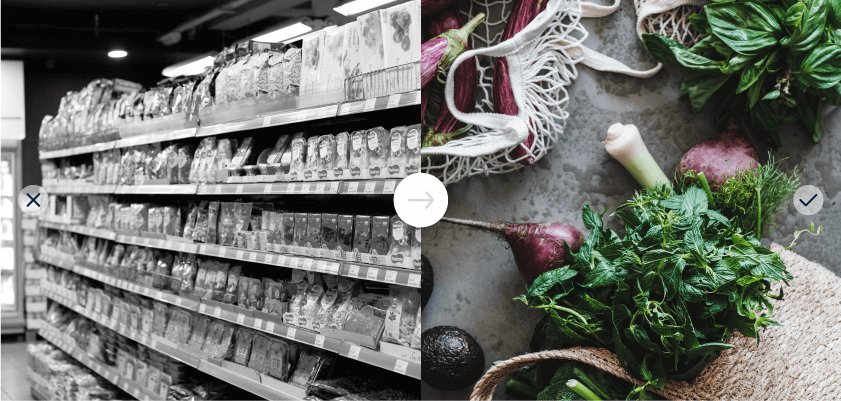
10. The eco and the bio is healthier
E These stamps inform us of how the food production process has been but do not indicate its nutritional quality. U n point in favor is that eco food has to meet stricter requirements, although it is not always synonymous with sustainability. Currently it has not been possible to demonstrate from a scientific point of view that organic products are healthier. That is why we must always read the ingredient label and bet on fresh fruits and vegetables , local and seasonal . And remember, being super doesn’t mean it’s better, so you know, more market and less supermarket .
11. To lose weight: salads, boiled, lettuce and grilled breast
P We may associate these types of preparations with a lower caloric intake. However, the energy intake depends on the ingredients we use and the quantities, not the type of recipe. For example, a salad with avocado, chicken, nuts, feta cheese and Caesar sauce is sure not very low in kcal. A grandmother’s artisan boiled with bacon, blood sausage and good oil… either.
12. Lemon water is detox
N o there is scientific evidence to support the consumption of water with lemon in the morning to lose fat, “cleanse”, “purify” , “Detoxify” … If you like to have something refreshing in the morning, go ahead, no problem.
13 Supplement with vitamins just in case or
T both a deficit and an excess of vitamins can negatively affect health. Before using a supplement you should have an analysis to detect the individual status of each vitamin. Planning your diet well will help control levels and, as a last option, you can use a supplement.
14. Intermittent fasting to lose fat
De faced with a loss of fat, what matters is the caloric deficit maintained and generating energy expenditure through daily activity and training. Intermittent fasting is a strategy that makes it easier to meet your caloric deficit by reducing the window in which food is eaten. However, at the level of scientific evidence, it has not been shown that more fat is lost with fasting than with a normal deficit.
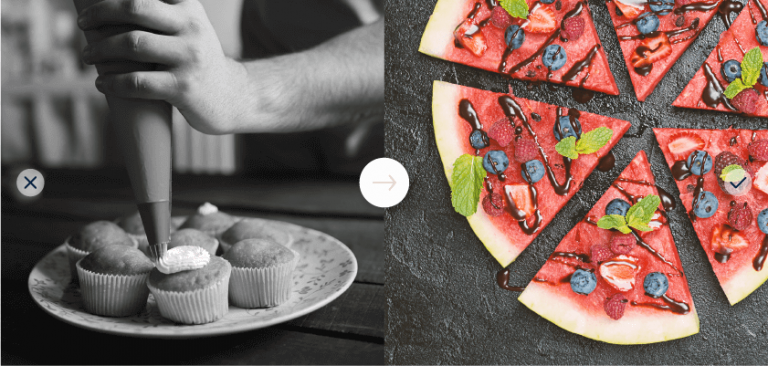
15. If it is handmade, it will be more nutritious or
H making it at home doesn’t have to be synonymous with healthy or nutritious. A cake, cookies or muffins with ingredients such as refined flour, sugar or low-quality fats will remain unhealthy products. However, a pizza (like esta or this ) with homemade dough and quality ingredients can be a very healthy option.
16. If it is whole grain or with fiber it is slimming
L Whole foods have more fiber, but high-fiber products do not have to be whole. A food with fiber does not lose weight. A whole food, either. Products or foods that contain fiber are more satisfying, therefore they can make you eat less, but we cannot lose the north. What really matters to lose weight is the caloric deficit (you know, that you spend more kcal than you eat). If you want to satisfy your doubts about fiber, see the following post: Fiber and sports performance .
17. To improve performance you have to do a keto diet (without carbohydrates)
L A ketogenic diet or keto diet is not for everyone as it can have negative effects in some cases (as we will explain in this pos t ). However, it can be interesting at a sports level to reduce the% of fat or increase the duration of glycogen deposits. In this other post you can find more information.
18. The pasta fattens a
N or there are foods or recipes that make you fat or lose weight. The energy balance between the energy produced by the food eaten and the energy expenditure is what we have to take into account. If over a long period of time the energy intake is higher than the expenditure (even if you have eaten super healthy), we will see how the scale goes up.
19. Fruit at night NO
E This is one of the most widespread nutritional myths, but the body does not have a clock that tells what time food is best or worse. Therefore, a piece of fruit, if you don’t have any intolerance problems, will always be a good option.
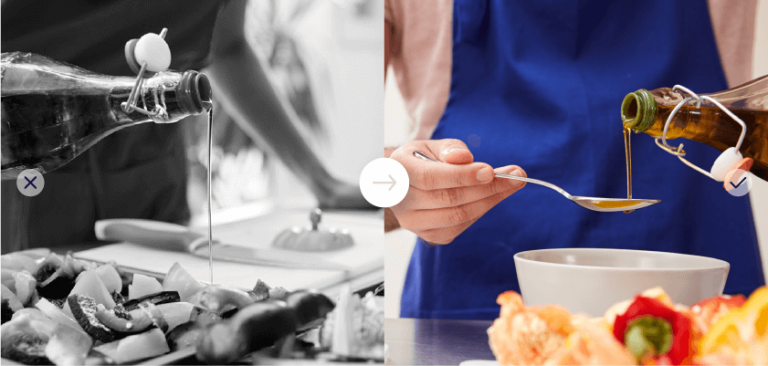
20. Extra virgin olive oil is very healthy or
Q ue an oil bears the surnames Virgin and Extra is synonymous with quality, but it does not reduce the Kcal it provides. Oils are practically fat, and fats provide more than twice the Kcal of carbohydrates and proteins. For this reason, we cannot ignore the amount of oil that we use to cook or dress salads. If we overdo it, everything that was good for would become bad. Using a spoon can be used to count servings. The spray oils also help us distribute it much better without having to spend 5 seconds spreading the oil in a jet.
21. The sugar mat a
E There are many dietary sources of sugar, but not all have the same impact on the body. The sugar naturally present in a fruit (accompanied by fiber and other nutrients that control blood glucose) is not the same as a sports gel that contains a mixture of different synthetic sugars. In an athlete the second option may be necessary at certain times and help improve their performance.
22. Sweat removes toxins
C The more you sweat, the more you become dehydrated, hence the importance of adequately replenishing fluids during exercise. Sweating is a function of the body to regulate body temperature. That’s it.
23. Light is low in calories
S according to legislation , The light label indicates that this product provides 30% less Kcal than the original product. That is, if something is hypercaloric, the light can lower it to supercaloric. It doesn’t have to be healthy at all, which is why reading nutrition labels is important. For example, a light cheese has a lot of fat while some light potato chips have a lot of fat and in addition to the bad as.
24. Gluten-free is better
A Although gluten is a low quality protein, it is found in many foods that provide iron, fiber, calcium, folate, niazines and beneficial bacteria for the intestine. It provides texture and flavor, therefore, many “gluten-free” foods have additional ingredients to counteract its absence. It may be interesting not to consume gluten in excess, but if you do not have a diagnosed allergy or intolerance to gluten, its restriction is unnecessary.
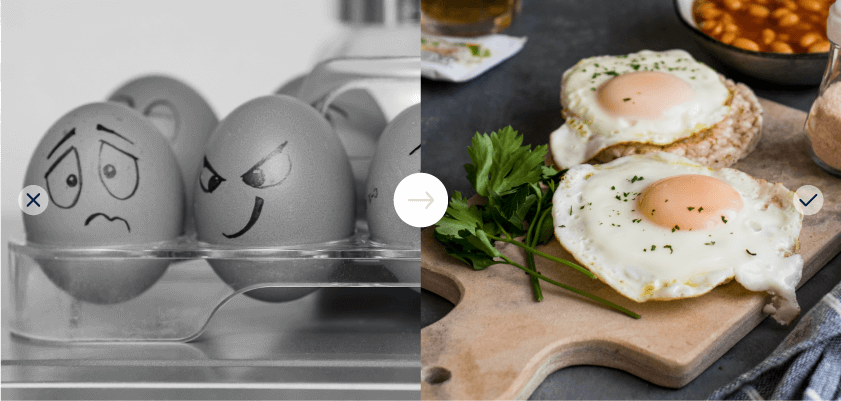
25. Maximum 3-5 eggs per week
L he latest studies confirm that the consumption of 1-3 eggs PER DAY is not related at all to cardiovascular problems. In fact they exercise a protective role. Therefore, a week you could consume 7-21 eggs. It is a food with a protein of high biological value and they provide a large amount of vitamins and minerals. Doesn’t raise your cholesterol or anything like that.
26. Proteins are for muscles
Proteins are much more than muscle. Not all the protein that we consume and absorb is dedicated to the synthesis of muscle mass. There are many enzymes, transporters, complexes, and structures that need to be synthesized for the body to function properly. Proteins are not usually used as an energy source but they also have this function.
27. Supplementation is not healthy
A Currently there are few supplements with great scientific evidence to support their use. It is important to know the context of each person, if they really need supplementation, what dose or when to use it. If you want to know what supplements are and what supplements are not, take a look at this post about the A, B, C and D of supplementation .
28. Being athletes is incompatible with being vegan
There are many nutritional myths that revolve around the concept of ‘vegan’ or ‘vegetarian’. However, a well-planned and personalized diet does not have to be deficient in nutrients, be it omnivorous, vegetarian or vegan. There are simply some nutrients that should be given more attention. The use of a vitamin B12 supplement is non-negotiable. In our Render without Meat workshop we explain that it is great; )
29. Fish is toxic due to mercury
N o all species of fish are high in mercury. Nor are all people at risk population. Therefore each person must individualize the consumption of fish. In this post Fish and Mercury you will answer your questions.
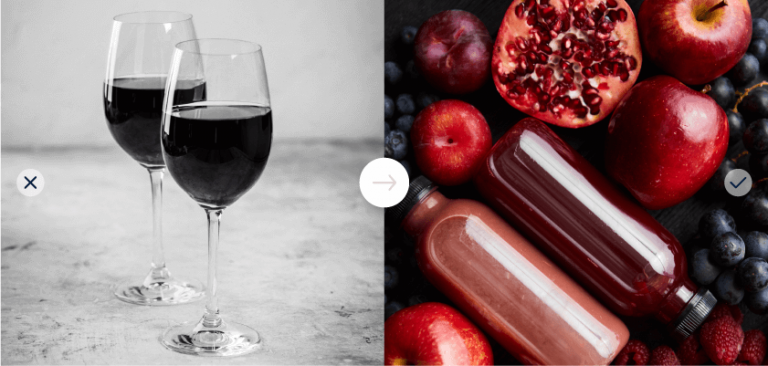
30. A glass of wine is heart-healthy. And beer is a good recuperator.
E l alcohol is toxic and carcinogenic , therefore, saying that the intake of an alcoholic beverage is healthy because it provides polyphenols is reckless. There are other dietary sources to find these nutrients, for example: reddish and purple legumes, vegetables or fruits.
It is true that beer provides vitamins, minerals, carbohydrates and liquid. Sounds perfect to retrieve, but nothing to do. We cannot forget that alcohol dehydrates and affects enzymes related to muscle recovery. It also does not meet the amount of electrolytes necessary for proper recovery.
31. Orange juice is “bad sugar”
The problem is that by removing the fiber, you take away two things: 1. The satiating capacity: in a natural orange juice, you take the sugar of three oranges squeezed. If you drink the orange whole, you don’t usually take more than one and, in addition, it will take away your hunger for longer than a juice. 2. You take away the fiber: this makes the glycemic index higher (the sugar passes faster to the blood). Let me explain: if a food is rich in simple sugars, blood glucose (blood sugar level) will rise rapidly and then create a spike. If the food is rich in fiber, protein or fat, this increase will be more gradual. Therefore, what we really have to take into account is the glycemic load, that is, the set of glycemic indices of the foods we eat together. For example, it is not the same to drink an orange juice alone, than that same juice with a whole wheat toast of scrambled eggs (fiber, fat and protein).
32. Butter is bad a
E is a type of animal fat with a higher amount of saturated fat. If we compare it with margarine, which is of vegetable origin and with polyunsaturated fats, we might think that this second option is better. The problem is that these fats need to be hydrogenated so that at room temperature they are in a solid state. They are called TRANS fat, and they are not beneficial for the body.
33. Red meat is carcinogenic
E The isolated consumption of a food does not cause cancer. The type of cooking that is applied or consumption in excessive quantities, can increase the chances of developing cancer. But not an occasional and controlled consumption.
34. Processed NOT
H and what to differentiate processed foods from ultra-processed ones. Currently, the vast majority of food undergoes some phase of processing during its preparation, since it allows to ensure the quality of the product and increase its useful life. For example, extra virgin olive oil, cheese or yogurt are processed foods but of unquestionable quality.
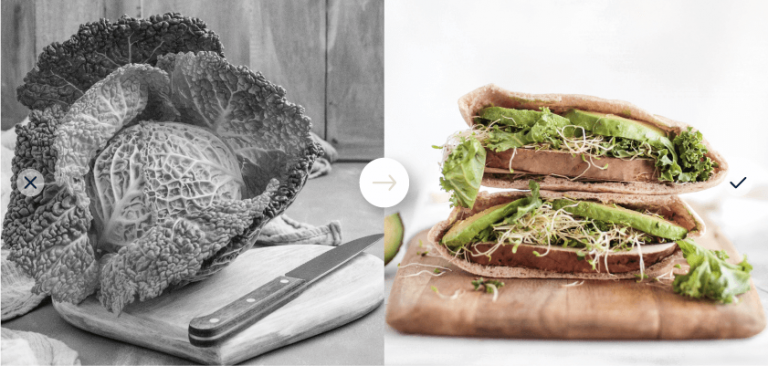
35. To lose fat, a fat-free diet
E n the context of weight loss, eating more fat does not mean putting on more fat. The important thing is to generate a controlled caloric deficit that can be maintained over time. Once the protein intake is covered, the rest of the energy requirement can be covered with foods that provide quality fats, depending on the taste of each individual.
36. The more protein, the more muscular a
E Optimal protein consumption is a basic pillar, along with rest and training, to increase muscle mass. But consuming more protein is not related to increased muscle mass synthesis. The general recommendation can be between 1.8 – 2.2 grams / kg of weight, although it will depend on the characteristics and situation of each athlete.
37. Cookies and cakes were a
E he context of each person, the nutritional quality and the servings of these products will mark whether they are better or worse options. Quality ingredients such as whole wheat flours, fruit for sweetening and nuts can add quality to these recipes. If they are industrial, unfortunately they will be … CACA.
38. You have to eat 5 meals a day
This is one of the biggest nutritional myths. But no, you don’t have to eat 5 times a day. T he distribution of meals throughout the day is a strategy that must be personalized, so that it is not good for everyone to eat 5 meals. The objective is to consume a sufficient quantity of food to cover nutritional requirements and that the number of intakes adapts to our lifestyle.
39. You have to drink 2 L of water a day a
D In general, the recommendation to drink between 2 – 2.5 L a day is usually given, but it should be personalized. There are many variables that influence the amount of water to drink: sex, weight, lifestyle, physical exercise, diet, altitude, temperature, humidity …
40. Pizza, hamburger, sandwiches or sandwich, not good
S We often associate this type of food with low nutritional quality. We must differentiate the products that are bought in fast food chains from those that are made at home with quality ingredients and controlling the portions. They have nothing to do with it.
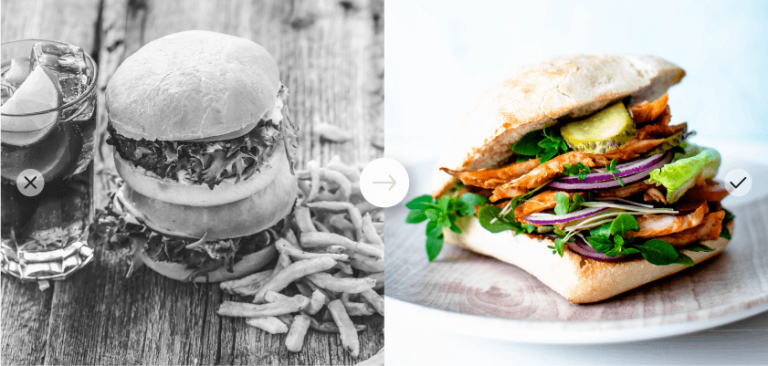
Conclusion: c As you have seen with these nutritional myths, nutrition science is sometimes more fiction than science. N no nutrient, food, recipe, type of diet, or nutritional awareness makes you fat or thin, healthy or unhealthy, good or bad. Nutrition and the human body is much more complex than all this.
Now that we are beginning to break quarantine, let’s take advantage of inertia to also break these 40 nutritional myths.
And now, if this inertia also pushes you to improve your sports performance and eat a planned diet and free of nutritional myths, do not hesitate to visit our services with nutritionist on li ne . We are waiting for you.

